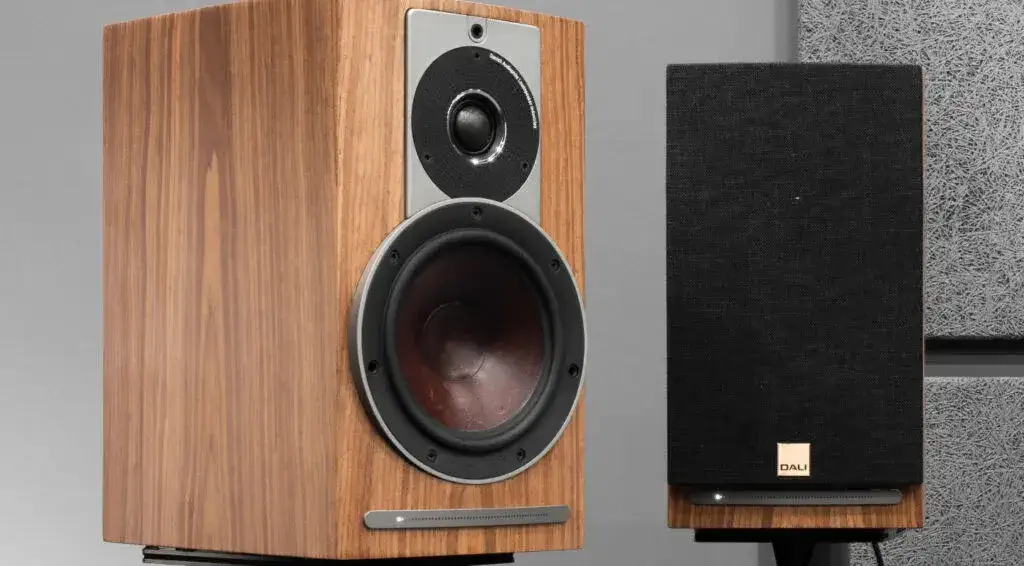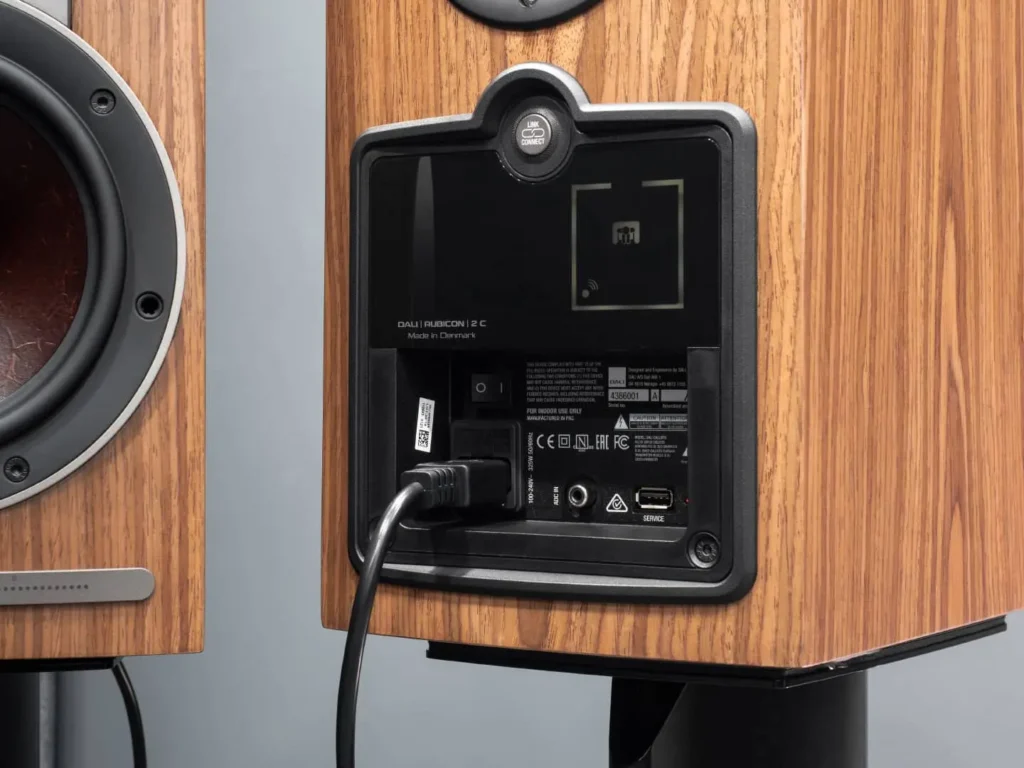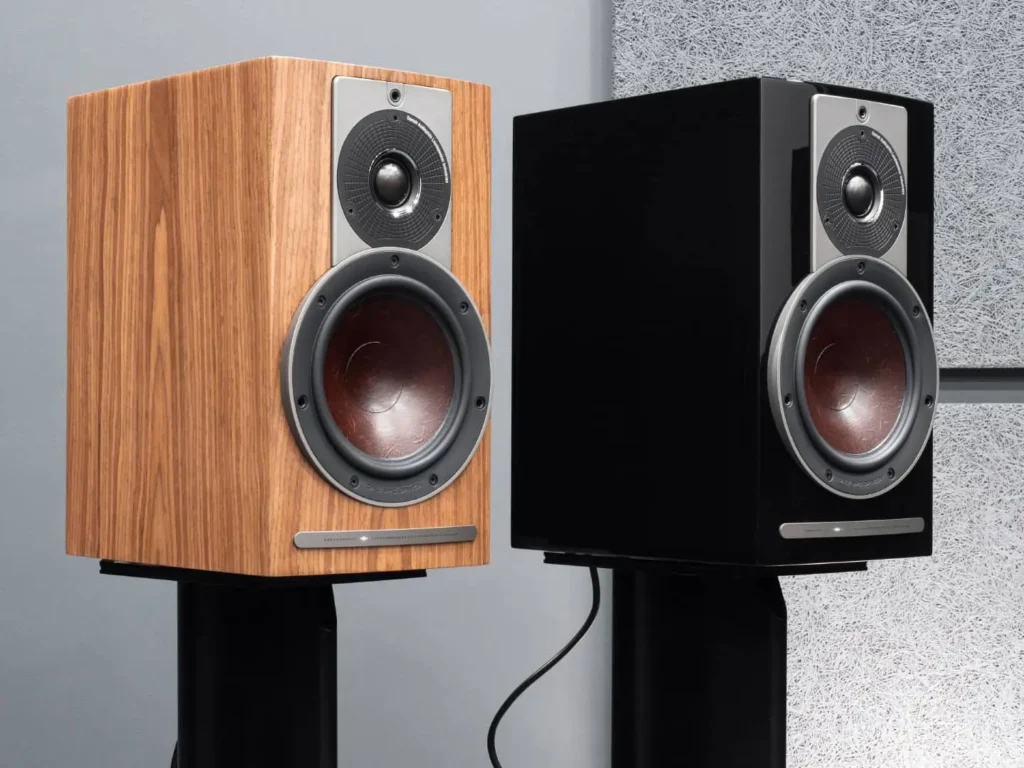
The new line of active acoustics Rubicon C from the Danish manufacturer combines the comfortable musical sound of the passive Rubicon series with the advanced technologies of Callisto speakers. We begin our acquaintance with the shelf models under the index “2 C”.
Active acoustics from DALI have always sounded decent – starting with the democratic “wired” (Bluetooth aptX does not count) Zensor AX series. This is despite controversial decisions such as the preliminary conversion of the analog signal using ADC with subsequent transfer of the stream to the DSP processor (the main option was a digital connection via TOSLink optics). But the result is important – and even the younger speakers produced a lively natural sound without a digital aftertaste.
Then proved that the natural sound of Danish active speakers is not lost when connected wirelessly using the proprietary Sound Hub. Most of the technologies for transmitting, converting, and amplifying the signal were borrowed from the Rubicon C bookshelf and floor-standing speakers from this series.
From the front, the new Rubicon 2 C bookshelf speakers are virtually identical to the passive of the same name — even the dimensions are completely identical. Only at the bottom, instead of the usual shiny logo icon, the active version has a horizontal strip of LEDs that indicates the volume level — the same is found in Callisto.
All the differences are on the back wall. At the bottom is the main “Link Connect” button, which quickly links the speaker to the wireless hub, as well as a small LCD screen that shows the process of this connection.
Below you will find the RCA ADC IN connector, which sends the analog signal to the ADC. But, as with the younger active Censors and Callisto, this connection option is considered auxiliary, since it is assumed that the main source for the Rubicon C will be digital sources that directly transmit the signal without additional conversion.

Overall, the design of this part of the case is almost identical to that of the Callisto 2 C, including the location of the switch and the socket for the power cable. By the way, gesture control, when you stroke the Callisto speaker on the top, is missing in our case – however, personally, I consider “stroking” more a feature than a really useful function.
The finish options here are straight out of an acoustic designer’s textbook: as always, classic wood imitation (walnut in this case) and black lacquer or white gloss for those who prefer a modern look.
Assembly model
As we can see, when creating the active version of Rubicon, the Danes did not invent anything fundamentally new but took the reliable path of combining proven technologies.
The speakers in the bookshelf speakers, located in the 25 mm MDF front wall, have been carried over from the passive version almost unchanged. These are the already familiar 29 mm ultra-light tweeter with a soft fabric dome and a 165 mm midrange/low-frequency emitter with a proprietary diffuser made of paper pulp with wood fiber inclusions for greater rigidity and minimization of distortion, as well as using SMC (soft magnetic compound), which reduces sound defects caused by mechanical losses.
Each of the emitters is driven by two directly connected self-oscillating digital Class D amplifiers with a feedback loop with a total power of 250 W, essentially implementing a bi-amping scheme. Frequency separation at 2,600 Hz is performed using DSP. The signal to the amplifiers in each speaker comes from a high-quality Burr Brown PCM1796 DAC.
Virtual “wire”
The Rubicon C bookshelf and floor-standing speakers are offered by default in a set with a wireless DALI Sound Hub – and this option should be considered as the optimal solution, since in this case, signal transmission through the hub, oddly enough, implies better sound quality than through wires using an analog connector. And the price of the hub itself in the set and separately differs significantly.

Externally, the hub looks like a standard audio component like a preamplifier. In fact, it combines repeater, switching, and signal conversion units. You can connect to the device via the following connectors: coaxial S/PDIF, analog RCA, 3.5 mm mini-jack, and two optical TOSLink inputs, as well as via a wireless connection 24 bit/96 kHz and via Bluetooth (AAC, apt-X/apt-X HD).
In addition, the device has two ports for installing additional modules, and for them, there is already a “BluOS NPM-1” block with MQA certification, which allows you to work with streaming services and multi-room solutions.

The Sound Hub communicates with the speakers using a digital wireless uncompressed 30-bit I2S protocol with a resolution of 24-bit/96 kHz, with the remaining bits used for volume control and other parameters. It uses the 2.4 or 5.8 GHz frequency range, and this direct connection does not require a shared Wi-Fi network.
which works with almost all known high-resolution formats and can also create bit-perfect copies of CDs.
Heaviness is not a burden
I put on Metallica’s “For Whom the Bell Tolls” more for the sake of it, not expecting any particular revelations. And I was wrong. The speakers delivered full-fledged lows – clear, focused, and fast, where their slight dryness even did some good. The guitars, as expected, sounded distinct, crumbly, and ominous. I can’t recommend these speakers to true metalheads, but you can really listen to heavy genres on them without forcing yourself.
I’ll say more: these shelf “Rubicons” cope even with the fierce British from DragonForce – the amplifier with diffusers easily keeps up with fractional power metal. Of course, specialized acoustics would have sounded this genre much better, but 2 C is still capable of not mashing all the sounds into mush and sufficiently revealing the compositions.
The acoustics present soft country rock much more advantageously. The composition “Hotel California” from the Eagles’ live album is often used to test the correct reproduction of the bass drum and the stage, which should clearly show the placement of the guitars. Now the bass was at the proper level: full-bodied, rounded, without hum and blur. I even looked at the passport data once again – whether the manufacturer was modest, writing the lower frequency threshold at 46 Hz. The stage was also pleased with its volume and depth.
Rubicon 2 C conveys pop music vividly and emotionally, especially if the recording quality is up to par, like that of the genre’s luminary, Michael Jackson. I’ve liked the composition “Billie Jean” since my pioneer childhood, and now I have to admit that I haven’t heard such a combination of volume, wide stage, and distinct sound of even the smallest nuances for a long time. Although I’m being disingenuous – I’ve heard it, but the cost of that setup was several times higher.
The entire DALI line, starting with the younger models, has never had any problems with jazz – so I had no doubt that these speakers would reproduce the composition “Benjamin” by The Dave Brubeck Quartet without any complaints. Here I especially paid attention to the ability to convey the naturalness of the sound of the instruments, without falling into excessive “digitalization”.
Classical music – in particular Vivaldi’s “La Primavera” performed by Japanese-American violinist Anne Akiko Meyers and the English Chamber Orchestra – also showed that the built-in DSP doesn’t add any extraneous effects, and the sound has a natural analog flavor without a hint of synthetics or simplification.
This is the main difference between the wireless concept from DALI and the approach of some other manufacturers. The Danes focused on authentic natural hi-fi sound but achieved it digitally.
Expanding the list of connected components and even building a multi-room network is not such a priority, although Sound Hub allows a lot if desired. The absence of wires here is not an end in itself (you still have to connect to an outlet), but a feature of the signal transmission technology. Although no one has canceled the ease of use either.
Conclusion
These are true DALIs, with the signature detailed musical sound that fans of the brand value. In a relatively compact bookshelf format, the Rubicon 2 C can not only handle a variety of genres – from hard rock to chamber classical music – but also adequately reveal their features and nuances. And don’t be confused by digital and wireless technologies – the naturalness of playback has not suffered at all.
If someone suddenly lacks support and massiveness in the lows in heavy rock and monumental orchestral works, then you can pay attention to the Rubicon 6 C floor speakers, developed using the same technology, which we will talk about in the foreseeable future.
Specification
Advantages: Detailed, rich, balanced sound, distinct bass. Confident reproduction of a wide range of genres. Simple and convenient connection.
Flaws: In this segment, it’s hard to find fault with the sound, but nothing cutting-edge comes cheap.
Price: RUB 275,990, in a set with Sound Hub – RUB 299,900 (Sound Hub separately – RUB 76,490)
Passport details
Acoustic design: bass reflex
Frequency range: 46–26,000 Hz (±3 dB)
Maximum sound pressure: 108 dB
Crossover frequency and type: 2600 Hz, Hybrid Full Active 24-bit DSP
DAC: Burr-Brown PCM1796
Speakers: HF – 29 mm soft fabric dome, MF/LF – 165 mm, SMC
Maximum amplifier power: 250 W
Amplifier type: discrete class D
Wireless: 24-bit/96kHz (lossless)
Recommended distance from the wall: 20–120 cm
Dimensions: (WxHxD, with base and grills): 19.5×35.3×33.5 cm
Weight: 8.4 kg (one column)



